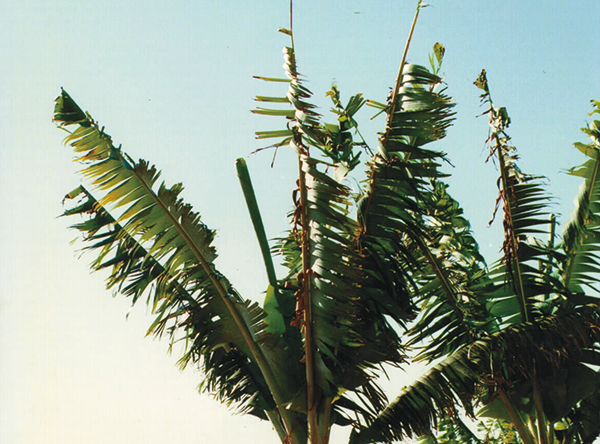Tattered or holey leaves
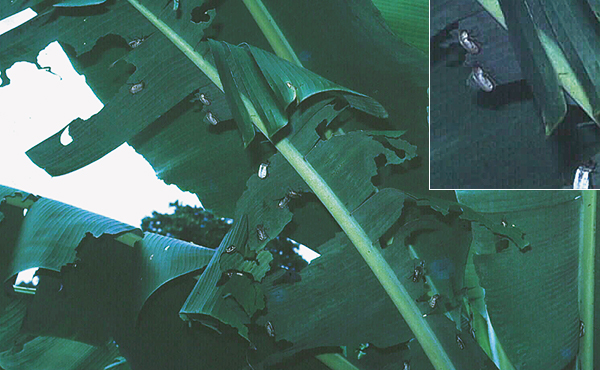
Greyback cane beetle
Cause: Feeding by adults of Dermolepida albohirtum. Damage is seldom severe, but extensive feeding on older leaves of bunched plants can lead to sunburnt fruit.
Solution: There are no recommended foliar chemical treatments as these will interfere with biological control and will result in serious mite infestation. This will be more damaging and costly than greyback cane beetle damage.
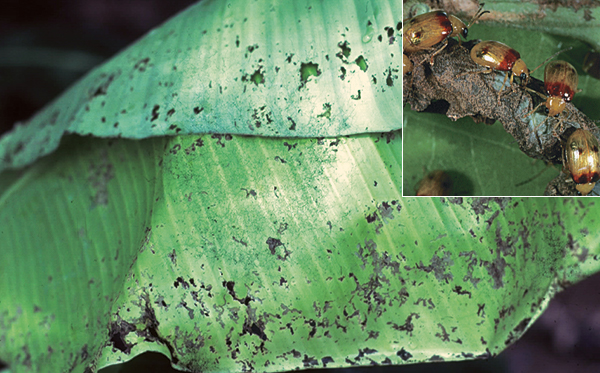
Swarming leaf beetles
Cause: Leaf feeding of large numbers of adult Monolepta australis or Rhyparida spp. beetles. They swarm in spring and summer.
Solution: Damage is sporadic and no specific treatment is required.
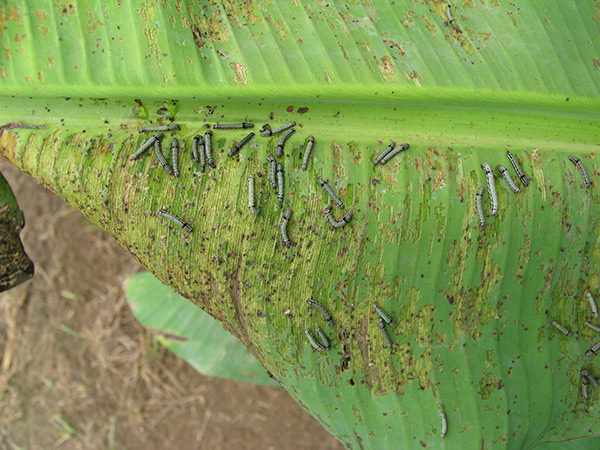
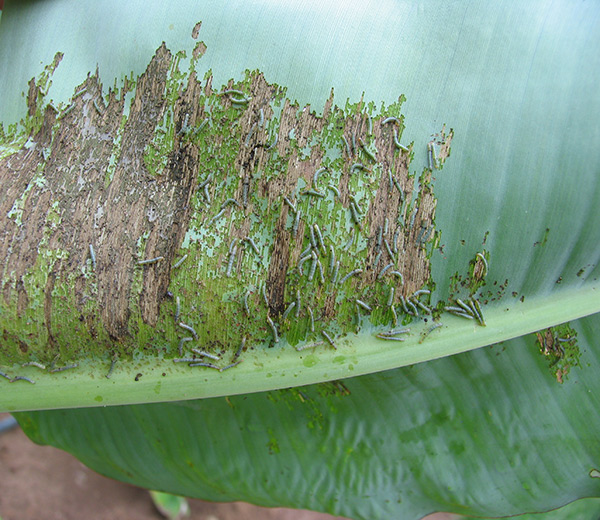
Cluster caterpillar
Cause: Young larvae of Spodoptera litura feeding in groups on either the top or bottom of leaves, leaving the opposite side intact. Large larvae are solitary.
Solution: Damage is sporadic and most often concentrated on the tender leaves of plant crops. Fruit damage is usually restricted to a few isolated bunches and seldom requires specific treatment.
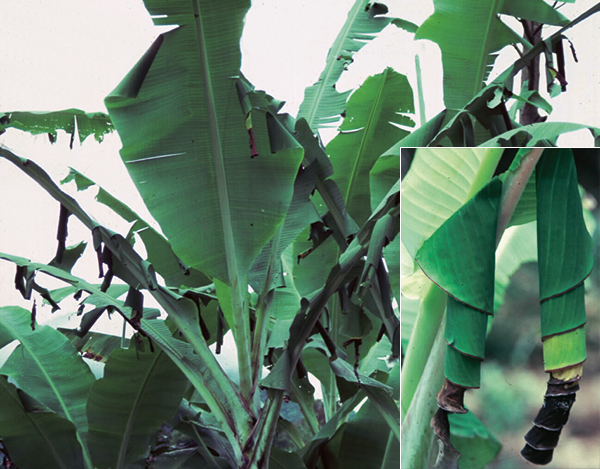
Banana skipper
Biosecurity Alert
Cause: Larvae of Erionota thrax feed on the leaf blade and strip and roll it to form a shelter in which the larva develops. In heavy infestations, the entire leaf lamina is destroyed, leaving only the midrib.
Biosecurity: This leaf pest has not been found in Australia or Torres Strait Islands but is well established in Papua New Guinea. It is widely distributed throughout China, India, South East Asia, Mauritius and Hawaii. Report all suspicious outbreaks to Biosecurity Queensland immediately (13 25 23).
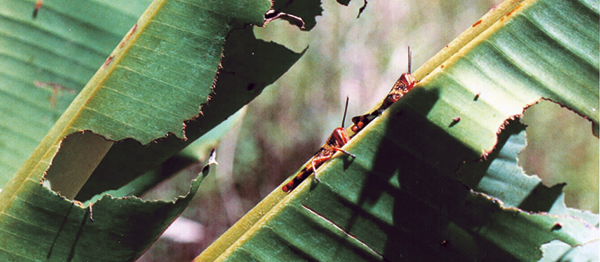
Grasshopper
Cause: Feeding by grasshoppers Valanga spp.
Solution: The damage is mostly cosmetic as plants will rapidly compensate for any leaf loss. It is usually only a problem on young plants, especially on new plant crops. No treatment is required.
